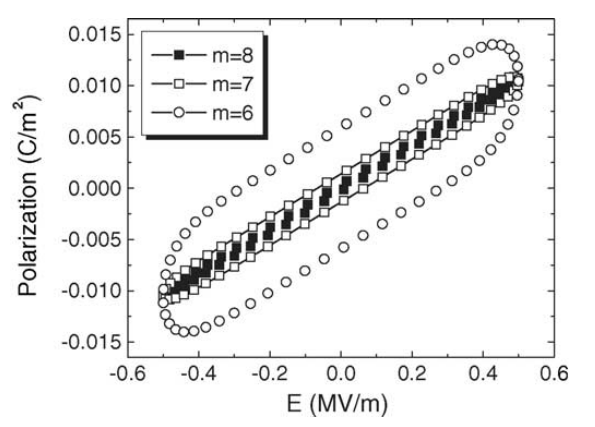We present a viscoplastic (rate-dependent) constitutive model describing both hysteretic and sub-coercive behaviour of ferroelectric ceramics. Viscoplastic models employ rate equations for the volume fractions of orientation variants along with a distribution function for grain orientations, providing a statistical macroscopic description for the processes of polarization reversal in polycrystalline ferroelectrics. Here attention is focused on two viscoplastic models for perovskite type ferroelectrics undergoing a cubic-to-tetragonal phase transition. Both models incorporate 90 degrees and 180 degrees domain switching, but differ in a number of representative domain orientations, which is 6 and 42, respectively. Different parameterisations for the models were tested, with a special emphasis on orientation effects in the behaviour of poled ferroelectrics under multi-axial loading as well as on rate effects. Simulation of the polarization rotation in soft PZT ceramics by electric field applied at an angle to the original poling direction show good agreement between the predictions of the viscoplastic model and experimental data.

We present a viscoplastic (rate-dependent) constitutive model describing both hysteretic and sub-coercive behaviour of ferroelectric ceramics. Viscoplastic models employ rate equations for the volume fractions of orientation variants along with a distribution function for grain orientations, providing a statistical macroscopic description for the processes of polarization reversal in polycrystalline ferroelectrics. Here attention is focused on two viscoplastic models for perovskite type ferroelectrics undergoing a cubic-to-tetragonal phase transition. Both models incorporate 90 degrees and 180 degrees domain switching, but differ in a number of representative domain orientations, which is 6 and 42, respectively. Different parameterisations for the models were tested, with a special emphasis on orientation effects in the behaviour of poled ferroelectrics under multi-axial loading as well as on rate effects. Simulation of the polarization rotation in soft PZT ceramics by electric field applied at an angle to the original poling direction show good agreement between the predictions of the viscoplastic model and experimental data.
